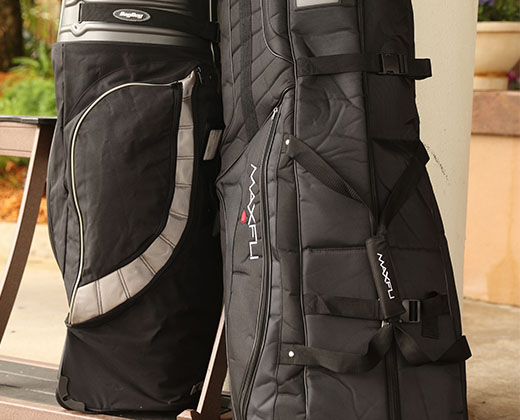Percussive Therapy for Golfers
Stay loose on the links with these helpful percussive therapy protocols for before, during and after your round.
Percussive therapy devices can be great training accessories for those seeking tension relief and care. But percussive therapy isn’t just for the gym. Athletes from all sports can enjoy some good vibrations by taking advantage of this useful therapy method.
One area where percussive therapy devices can feel right at home is on the golf course. As you drive, chip and putt through your round, your muscles can develop tension. This can leave you sore and your muscles fatigued, sometimes before finishing a full 18.
Theragun creator and founder Jason Wersland offers some tips to potentially boost your performance with the help of percussive therapy. Discover how you can use this method before, during and after your round with these Pro Tips.
WHY USE PERCUSSIVE THERAPY FOR GOLF?
While other sports might involve more running or contact, golf can still leave athletes sore and tired. After all, you’re using large muscle groups and positioning yourself in different stances to drive and hit the ball. It can be easy to see how you can build up tension in your golf swing.
In addition, Wersland also pinpoints golf as a great example of proprioception at work. Proprioception is the body’s ability to sense its location and actions. This ability to understand your positioning without consciously thinking about it can be essential to hitting a golf ball.
In order to keep your proprioception functioning properly and muscles loose, it can help to relieve built-up tension. Wersland says percussive therapy can be an effective tool to quickly soothe these issues either before or after golfing, as well as in between holes.
“It only takes about 15 seconds. So, whether you’re warming up, during the play or at the end for recovery, you apply this to those areas, and it relieves the tension,” Wersland says. “It actually allows your body to know where you are in space, which is a really good thing when you’re hitting a golf ball.”
RECOMMENDED PERCUSSIVE THERAPY PROTOCOLS
For the best results, Wersland recommends you use a percussive therapy device before, during and after your round. In each of these golf massage protocols, you should look to target your shoulders, hip flexors, quads and glutes.
Protocol 1: Warmup
Before you approach the tee box to begin your round, Wersland recommends a six-minute percussive therapy warmup. Take the necessary time to loosen each muscle group so you can start your round in full swing.
“You can hit those areas for 30 seconds each and then hit the driving range, take your club and warm up,” Wersland says.
Protocol 2: Intra-Round
As you move on to the next hole, you can keep your muscles loose by implementing a quick therapy session. “What you’re going to do is take about two and a half minutes, you’re going to hit those same areas, but you’re only hitting them for about 15 seconds at a time,” Wersland says.
Using your percussive therapy device during your next round can help you stay fresh throughout your game. In addition, any tension you built up can be potentially alleviated as you make the turn to the back nine.
Protocol 3: Recovery
Finally, before you head to the clubhouse to close out your round, Wersland says to take 14 minutes for a full body massage. “And this is head-to-toe, hitting as many of those muscles as you can allowing your body to recover,” he states.
Percussive therapy could be the tool you need to add to your golf bag this season. Try incorporating these Pro Tips into your golf routine to help relieve tension and lower your handicap.
Need a refresher on the basics of percussive therapy? Use these Pro Tips to help define what percussive therapy is and how you can benefit from it.








